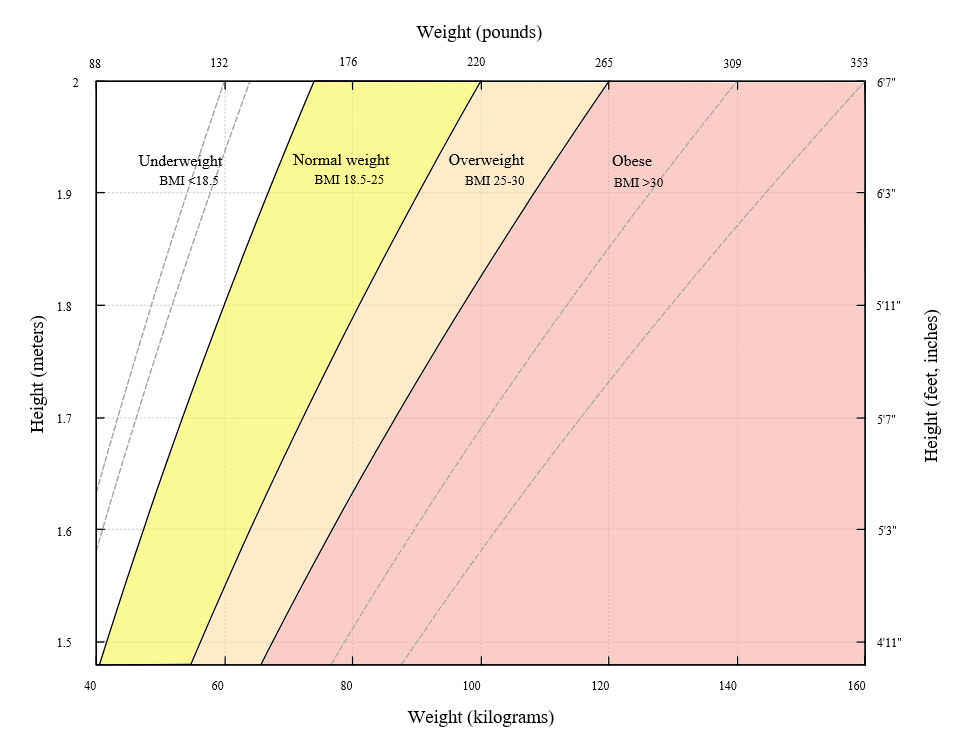As you may or may not know, BMI stands for Body Mass Index. BMI looks at weight in relation to height, and if calculated properly, can be a good indicator of overall health. What many of you probably do not know, is it is how is calculated and what each result means. That’s why I’m here. BMI is classically calculated by dividing a person’s weight in kilograms by the square of his/her height in meters. Since we don’t often work in the metric system, in order to do a rough calculation yourself, you can do the following:
- Multiply your weight in pounds by 703.
- Divide that answer by your height in inches.
- Divide that answer by your height in inches again.
This formula has its shortcomings though. It does not account for muscle mass, and since muscle weighs more than fat, BMI in athletic individuals it can be very skewed. With advances in technology, scales have emerged that can calculate BMI for us and seem to be more accurate. Either way, below is the chart that is used to categorize BMI findings. Being obese, and even overweight, can put undue stress on the heart and joints and lead to issues like heart disease, diabetes, arthritis and high blood pressure, among others. An understanding of your BMI can only help your journey to optimal health.
By amfucla using gnuplot and inkscape – Own work, CC BY-SA 4.0, https://commons.wikimedia.org/w/index.php?curid=62635627


